I’m one of the lucky 200 that got their hands on the early beta of Espressif’s new ESP32 chip evaluation board. It is the “big brother” to the popular ESP8266, Espressif has though noted that it should not be treated as an ESP8266 replacement and that it is targeting “different market”. The specs are impressive indeed, it is not just an upgrade, it is a whole new concept:
- Faster WiFi – Wifi has been upgraded to support HT40 speed (150 Mbps)
- Bluetooth Low Energy and Classic
- Dual core processor – 2x Tensilica L108 processors clocked at up to 160 MHz
- Low Power Mode Improvements – ADC conversions, level thresholds, etc.. can now be performed in deep sleep
- Peripherals – Capacitive touch, ADCs, DACs, I2C. UART, SPI, SDIO, I2S, RMII, PMW
- More RAM – ~400 KB on-chip RAM
- Security – Hardware accelerated AES and SSL, and more undisclosed improvements.
I also received an email from Espressif with the following ESP32 related documentation, the email message politely asks that these documents are not distributed (so please don’t ask):
- ESP32 Specifications
- ESP-WROOM-03 Specifications
- ESP32 Chip Pin List
- ESP32 Getting Started Guide for SDK based on FreeRTOS
To be precise, the evaluation board is using an ESP31, not an ESP32. Here is what Jeroen (aka Sprite_tm) describes in this post:
The ESP31 is a sort of engineering sample; we use it to figure out bugs and test most of the hardware. 99% of the things inthere will also be the same in the ESP32; there will be some small tweaks like the aforementioned memory map where we think we can improve the design without taking too much risk. For what I know, the ESP31 as is will not go into mass production, but everything you can do with the ESP31 will be possible on the final ESP32 as well.
The evaluation board itself came in the form of an ESP-WROOM-03 board and a breadboard friendly breakout PCB. The ESP-WROOM-03 comes unsoldered, the 1.27 pitch makes it nontrivial to solder, and there are reports already of folks destroying their board while trying to do the soldering. I used solder paste and a heat gun to build my setup, here are some pictures:
I wired up my board on a breadboard, hooked up a 3.3V FTDI cable and.. it lived:

The debug output suggests a SoftAP is started, and indeed my phone locates it under the name ESP32_DEMO_AP. It seems to be password protected though, and while I’m pretty sure the password is clearly stated in the documentation I received, I admit I haven’t read it yet..
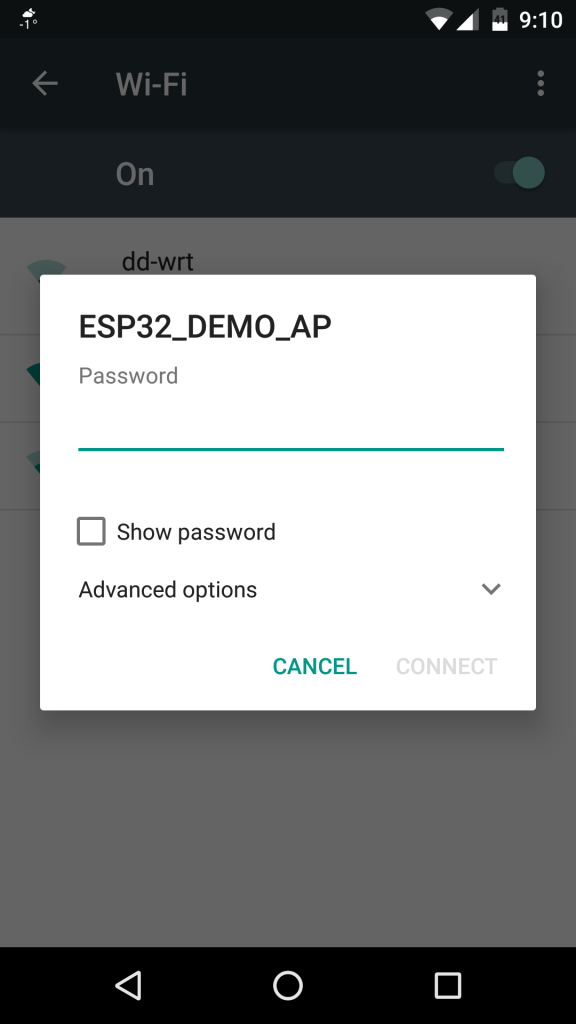
Next steps are setting up the SDK, doing a “Hello, world” and further deep-diving.

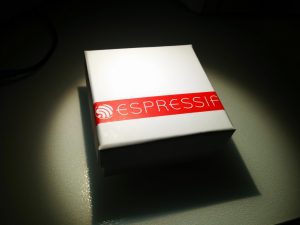
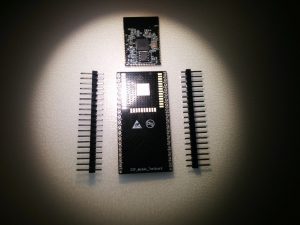

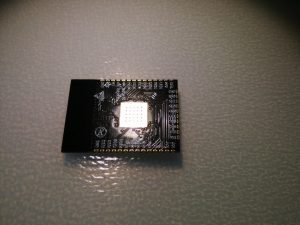
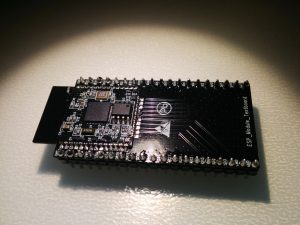
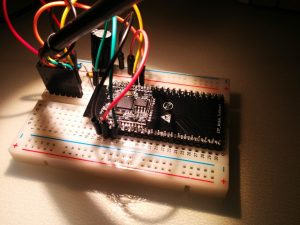
Pingback: The ESP32 Beta Units Arrive | KnowNaija
I wonder what the cost will be. Great article!
From what I’ve heard, it would be higher than what the ESP8266 used to cost when it rolled out. I’d speculate around $9-11 price tag, or at least I wish it could cost around that 🙂
Hi Martin
Great intor on the ESP32!
I was hoping you might be able to confirm that the ESP32 also includes a hardware floating point unit(dual/single)?
I’ve been looking around on the web and have only found it mentioned in the SDK, but not if in fact the hardware is onboard or not. Confirmation of this would be much appreciated as the application I’m looking into requires it and I’m holding off using other components instead.
Thank you.
The documentation that I received includes SoC’s function block diagram. It does not include FPU, so I am afraid there is no hardware FPU in ESP32
All About Circuits overview of ESP32 states that ESP32 powered by Tensilica CPU. I looked at the Cadance web site and according to the overview of the processor it has Embedded DSP, Voice/Audio/Speech, and Vision/Imaging capabilities, which I believe require FPU. Here is the link http://ip.cadence.com/ipportfolio/tensilica-ip
Please correct me if I am wrong. I am new to microcontrollers.
Interesting, one may only wonder why such an important detail would be missing in the ESP32 spec; oh well, it remains to be confirmed
Any mention of CAN in the documentation?
No mention of CAN bus support, I’d be surprised if it would even be possible to squeeze in such..